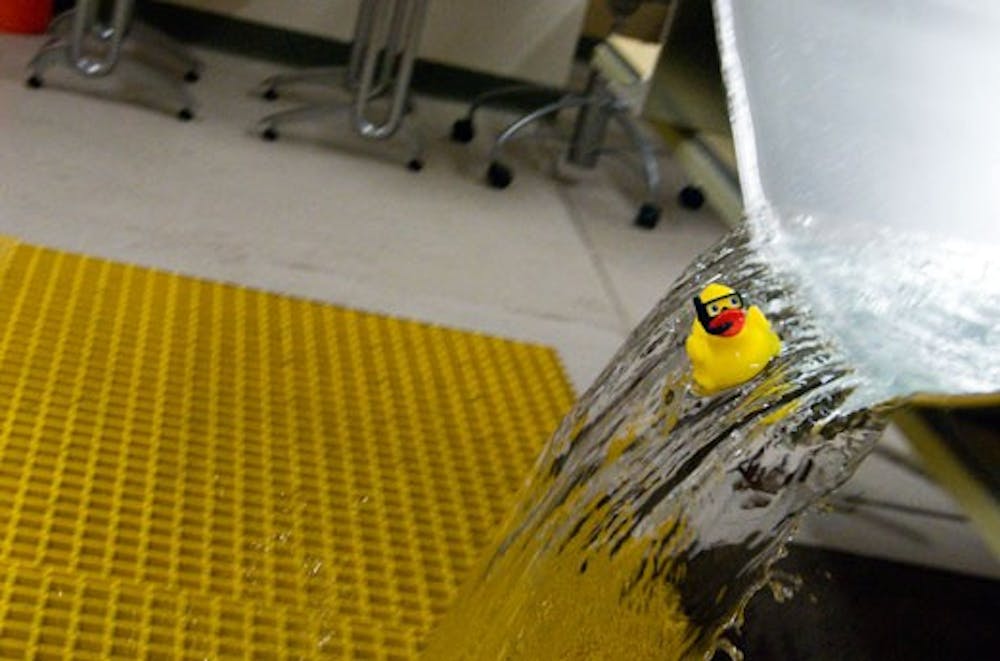Like a hands-on science museum, UNM's hydraulics laboratory lets students explore real-world applications of scientific principles.
The laboratory, in the Centennial Engineering Center, features a 50-foot-long, customizable arroyo simulator, a water-turbine simulator and equipment to let students test aerodynamic drag on cars and the effects of water pressure on fire hoses.
Director Julia Coonrod said the lab gathered equipment that was scattered around campus and put it all in one room to be more accessible to students.
Coonrod said the lab was funded by UNM's partnership with the Albuquerque Metropolitan Arroyo Flood Control Authority and that some of the equipment will be used for studies done by the authority.
"We are going to be looking at modeling a structure that has to do with relieving flooding in the Barelas neighborhood," she said.
Coonrod said the lab provides a great opportunity for students to study with the same materials used by civil engineers.
Get content from The Daily Lobo delivered to your inbox
"I think it's great we've been able to bring the teaching and research labs together," she said.
Coonrod said the lab equipment is easier to work with than what the department had before.
"The classroom environment is a hundred times better than it ever was," she said.
Nelson Bernardo, a graduate student who teaches a class in the hydraulics lab, said it gives students an interesting environment in which to explore fluid mechanics.
He said the arroyo simulator, which students call the "flume," lets students interact with scale models of arroyos and learn about the physics of water.
Bernardo said students can place objects such as bricks in the flume to block water and simulate flood conditions and that they use rubber ducks to represent debris in the arroyo.
He said working in the hydraulics lab is most important for civil engineering students interested in fluid mechanics.
"It brings it to a different level when you actually perform it," he said. "You can do the calculations, but this way is a lot more thrilling because it's interactive."
He said students who want to work in the lab can take the civil engineering 331 lab course.
Kelly Isaacson is a civil engineering student and has demonstrated the hydraulics lab equipment for the Flood Control Authority.
She said the lab has advantages over the old setup because it has more room and seating - in the form of bleachers - to allow many people to watch the flume at once. Isaacson said it is also more efficient than the University's old arroyo simulator, which was time-consuming to operate.
"You can have so many more people looking at it at the same time," she said. "(And) with this one, it's a lot easier to give demonstrations and make alterations to it."
Isaacson said the lab might help UNM recruit new students, as high schools often bring classes to see it.
"One of the great things about the new lab is showing it to high school students," she said. "When they walk in, watching their faces.. They're really excited."






